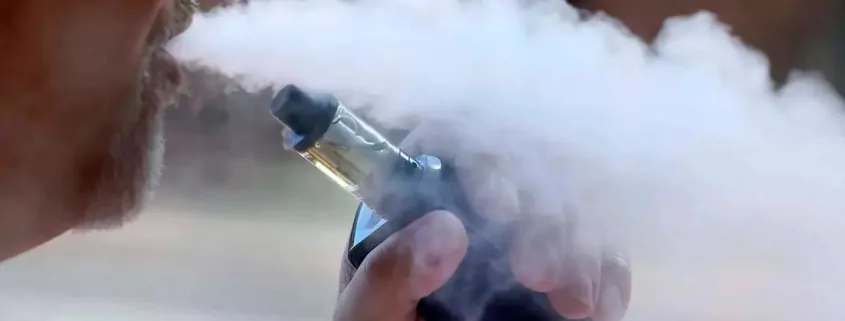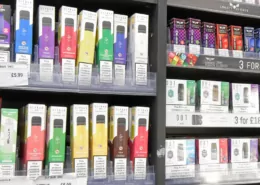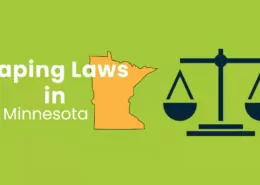FDA’s Failure on Vaping Fuels State-Level Confusion & Overreach
As state legislative sessions wind down for the year, adult vapers and users of other safer alternatives to combustible cigarettes are catching a brief respite from the relentless onslaught of new tax hikes and product restrictions. However, despite campaign-trail promises from figures like Donald Trump to protect flavored vapor products, the tools of tobacco harm reduction remain under increasing threat. This time, the primary driver is not just state-level action, but the U.S. Food and Drug Administration’s (FDA) persistent failure to regulate and authorize these products in a timely, transparent, and effective manner. This federal inaction has created a vacuum, leading to a chaotic patchwork of state laws that often undermine public health goals. What is urgently needed is a straightforward, science-based, top-down regulatory approach – starting with the FDA – to help the nearly 30 million American adults still using deadly combustible cigarettes transition to safer alternatives.
The 2025 Legislative Season: A Patchwork of Taxes and Bans
The 2025 legislative season has already produced sweeping and often contradictory changes across the country. In Indiana, lawmakers passed a budget that tripled the state’s cigarette tax while also doubling the vape tax to 30 percent. In Illinois, a tax increase on vaping products and nicotine pouches, hiking the rate from 15 percent to a staggering 45 percent, took effect on July 1st. Meanwhile, several states, including Hawaii, Oregon, and Washington, debated comprehensive flavor bans, though these ultimately failed to pass, highlighting the contentious nature of such proposals.
Beyond traditional taxes and bans, a new and concerning trend has emerged: vape directory bills. These laws empower state agencies, often tax departments, to create and enforce a list of “permitted” vapor products. Retailers caught selling unapproved items face inspections and severe penalties. Just two years ago, only a handful of states like Alabama, Iowa, and Louisiana had such directories. Between 2024 and 2025, however, nearly 40 states introduced legislation to enforce federal rules at the state level, and as of mid-2025, 15 now operate official directories.
The Core Problem: State Enforcement of a Broken Federal Process
State-level regulation isn’t inherently problematic. It becomes a major issue when state enforcement hinges on the FDA’s authorization process, which has proven to be opaque, glacially slow, and heavily biased against the very products that can help smokers quit. The FDA’s Premarket Tobacco Product Application (PMTA) process has been widely condemned by harm reduction advocates as excessively onerous, sidelining the small and medium-sized U.S. businesses that pioneered the vaping industry and have been instrumental in reducing cigarette use.
The history of this regulatory quagmire is telling. E-cigarettes first entered the U.S. market around 2007. The FDA’s initial response was to try and regulate them as unapproved medical devices. It wasn’t until 2009, with the passage of the Family Smoking Prevention and Tobacco Control Act, that the agency gained clear authority over tobacco products. After years of legal battles, a 2011 court decision affirmed that the FDA could regulate e-cigarettes, but only as tobacco products, not as medical devices.
In 2016, the FDA issued its “deeming rule,” officially bringing e-cigarettes under its regulatory umbrella. Herein lies the fundamental flaw: the Tobacco Control Act defines “new” tobacco products as anything introduced to the market after a “predicate date” of February 15, 2007. This date predates the arrival of virtually all modern e-cigarettes. As a result, these innovative, far safer products must undergo the burdensome and costly PMTA process. In contrast, new conventional cigarettes can often use the substantially simpler “substantial equivalence” pathway, which only requires showing they are similar to a pre-2007 product.
The Damning Results of FDA Dysfunction
The outcome of this flawed system is a public health paradox. Nearly two decades after e-cigarettes first appeared in the United States, the FDA has authorized only 39 vapor products, all of which are restricted to tobacco or menthol flavors. Only 47 products in total have successfully completed the entire federal application process. Meanwhile, an estimated 20 million adults in the U.S. are now using e-cigarettes, many to stay smoke-free – a 68.6 percent increase since 2016.
The FDA’s de facto ban on flavored vapor products is particularly counterproductive. Flavors are not some nefarious scheme solely to attract youth; they are a critical tool for helping adult smokers switch from combustible cigarettes. A 2018 survey of nearly 70,000 American adult vapers found that 83.3 percent used fruit flavors and 72.3 percent used dessert flavors “at least some of the time.” By denying authorization to these products, the FDA is ignoring the preferences of the very people these harm reduction tools are meant to help.
The FDA’s dysfunction has bred widespread confusion and misinformation. E-cigarettes, which are demonstrably safer than smoking, account for less than 1 percent of all FDA-authorized tobacco products. In stark contrast, thousands of traditional combustible cigarette products have received marketing authorization. When a federal health agency is more likely to approve a Marlboro than a mango-flavored vape, it is no surprise that state lawmakers and the public remain deeply misinformed about the principles of nicotine and tobacco harm reduction.
The Path Forward: Federal Leadership is Non-Negotiable
Until the FDA streamlines, modernizes, and applies a fair, science-based approach to its PMTA process, states will continue to step into the regulatory void with inconsistent and often counterproductive results. The blame for the current chaotic state of vape regulation starts at the top. If the United States is serious about ending the smoking epidemic that still claims nearly half a million lives each year, then the FDA must stop dragging its feet. It must prioritize public health over bureaucracy and recognize that providing adult smokers with appealing, regulated, and far safer alternatives to cigarettes is a vital component of a comprehensive tobacco control strategy.
- Full article here: COMMENTARY: FDA’s failure fuels confusion and overreach on vaping








